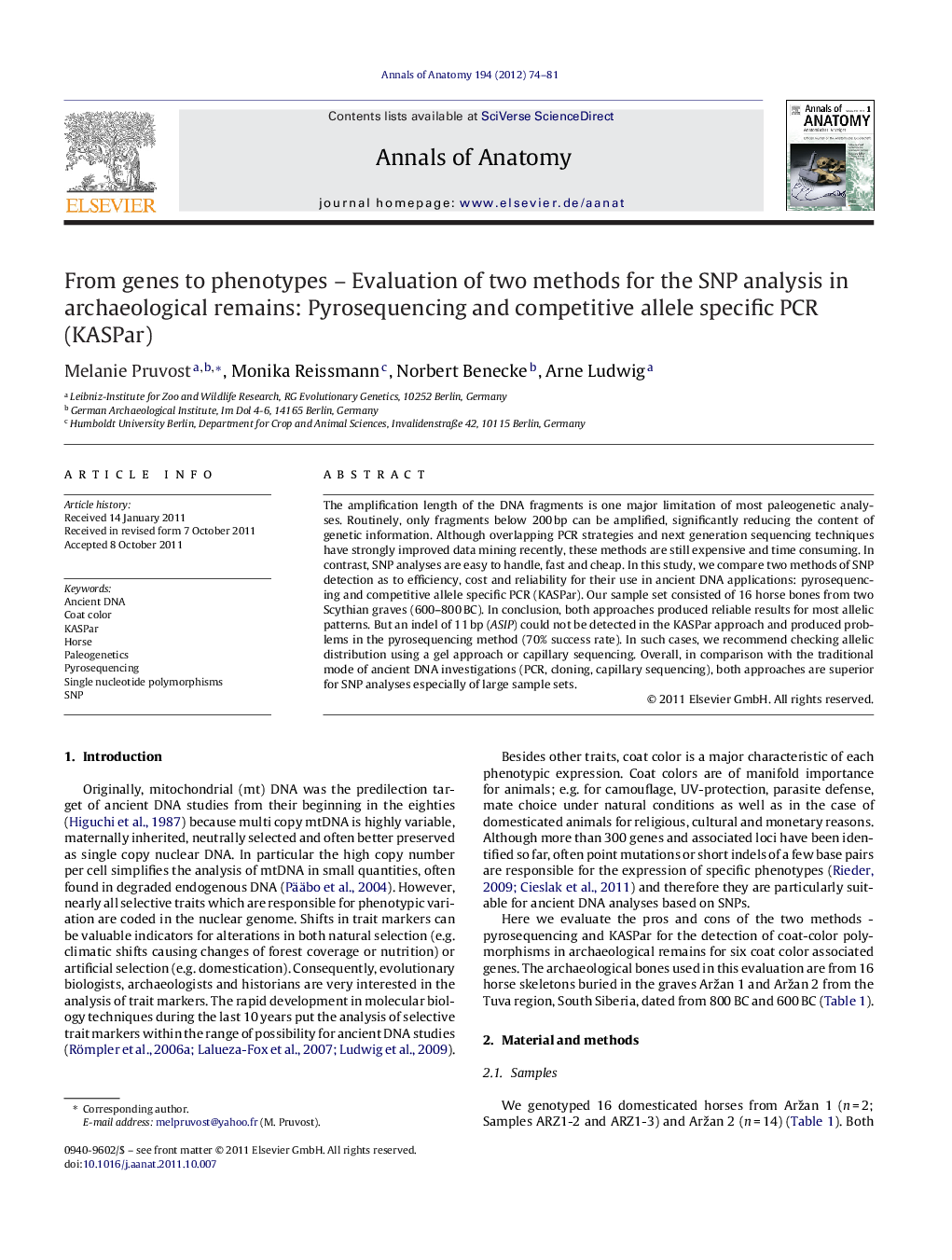| Article ID | Journal | Published Year | Pages | File Type |
|---|---|---|---|---|
| 8461878 | Annals of Anatomy - Anatomischer Anzeiger | 2012 | 8 Pages |
Abstract
The amplification length of the DNA fragments is one major limitation of most paleogenetic analyses. Routinely, only fragments below 200Â bp can be amplified, significantly reducing the content of genetic information. Although overlapping PCR strategies and next generation sequencing techniques have strongly improved data mining recently, these methods are still expensive and time consuming. In contrast, SNP analyses are easy to handle, fast and cheap. In this study, we compare two methods of SNP detection as to efficiency, cost and reliability for their use in ancient DNA applications: pyrosequencing and competitive allele specific PCR (KASPar). Our sample set consisted of 16 horse bones from two Scythian graves (600-800Â BC). In conclusion, both approaches produced reliable results for most allelic patterns. But an indel of 11Â bp (ASIP) could not be detected in the KASPar approach and produced problems in the pyrosequencing method (70% success rate). In such cases, we recommend checking allelic distribution using a gel approach or capillary sequencing. Overall, in comparison with the traditional mode of ancient DNA investigations (PCR, cloning, capillary sequencing), both approaches are superior for SNP analyses especially of large sample sets.
Related Topics
Life Sciences
Biochemistry, Genetics and Molecular Biology
Cell Biology
Authors
Melanie Pruvost, Monika Reissmann, Norbert Benecke, Arne Ludwig,
